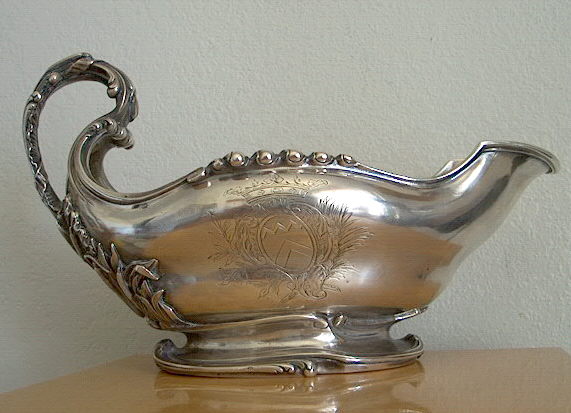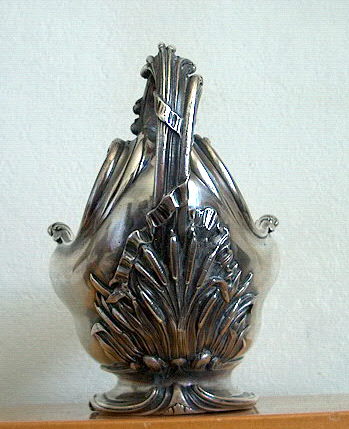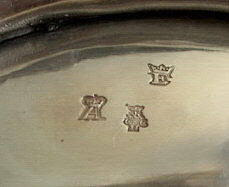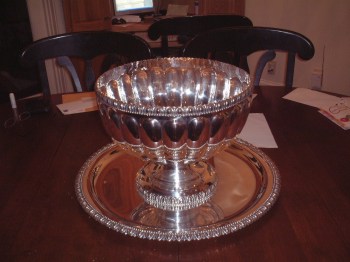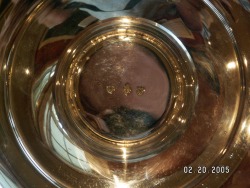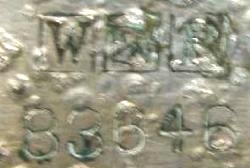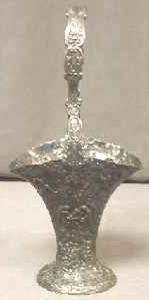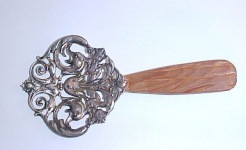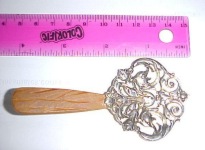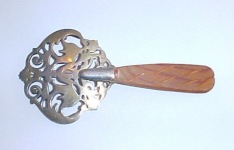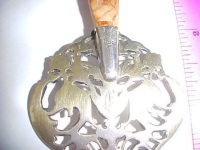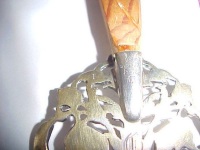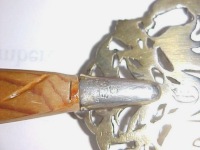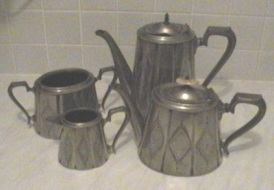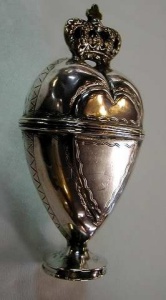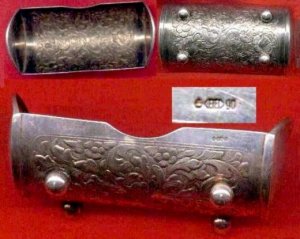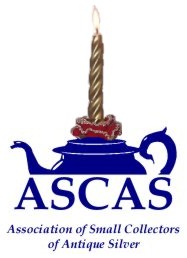
|
|
Happy Birthday,
ASCAS
|
ASCAS: summary of our first year of activity
ASCAS has one year!
It was founded on April 8, 2004, thanks to a webpage hosted on
Giorgio Busetto's website and the participation of a few friends
with the common interest on antique silver.
Now, after 12 months, we have grown, and ASCAS now has:
- its own site,
www.ASCASonline.org , well known by people browsing the web
- its logo
- its
Yahoo group, with 93 members
- its blog,
'ascasblog'
- its Newsletter, published every month (12 Newsletters)
- 12 Members' window published, dealing with members' items
- 31 articles published, supplied by 13 members, written in
English and, for someone, with French, Spanish or Italian
version
- 265 members, from 26 countries throughout the world
And now, what does ASCAS expect for its future?
I hope that ASCAS will continue on its way and, possibly,
improve and increase its activity in the promotion of knowledge
and interest in antique silver.
ASCAS website has, maybe, the widest selection of
articles related to silver freely available on the web.
This result was obtained without any commercial link or support
and owing to the passionate help of a fistful of members who
supplied articles, information, photos, questions and, not last,
revision of English texts written by non-English members.
To maintain our standards we, every month, need two new articles,
photos and informations, questions and replies from members, 'mistery
items'.
You too may be helpful by taking part in ASCAS activity, and,
don't worry, ... I and most of our contributors are
non-professional writers.
Giorgio Busetto
ASCAS Secretary
New articles for ASCAS website
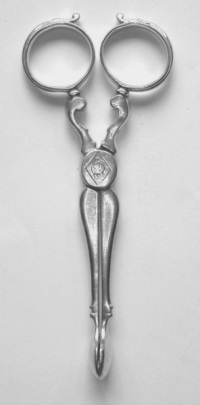 |
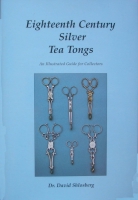 Dr. David Shlosberg presents 'Eighteen Century silver
tea tongs'.
Dr. David Shlosberg presents 'Eighteen Century silver
tea tongs'.
ASCAS member David Shlosberg is the author of a book
dealing with tea tongs, an extremely fashionable item
during the middle years of the eighteenth century.
click here |
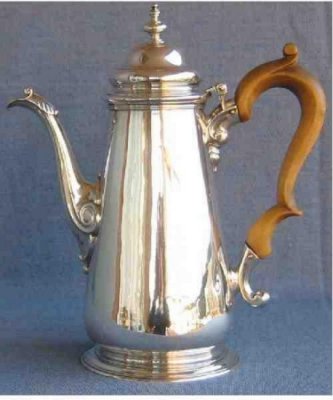
Giovanni Ciceri present 'Ten
steps to check and record the authenticity of an antique
silverware' - 'Dieci passi per verificare e registrare
l'autenticità di un argento antico', a practical
example of verifying and cataloguing a George II English
coffee pot
This article is available in double version
English
 -
Italiano
-
Italiano
 . .
|
List of members
Welcome to new ASCAS members:
Franco Bellino - Italy
Pam Center - USA
Silvia Colcuc - Italy
Burton Drexler - USA
Sharon Drews - Australia
Greg Faia - USA
Muhammad Farooq - Pakistan
Ellen Fuerst - USA
Julianne Galkin - USA
Phil Goularte - USA
Willian Hardt - USA
Margaret Holden - USA
Bill Johnson - USA
Kathy Kelley - USA
Linda Kyle - USA
Sara Mould - England UK
Gioia Pica - Italy
Christine Pollard - England UK
Max M. Samfield - USA
Carol Saye - England
Larr Trapper - USA
Ben Trawford - England UK
Will Tur nbo - USA
Wilfried VanderVeen - Belgium
Randy VanHoose - USA
Brian Ward - Australia
ASCAS has now 265 members.
The updated list of ASCAS members is now available (only
for members)
Members' Window # 12
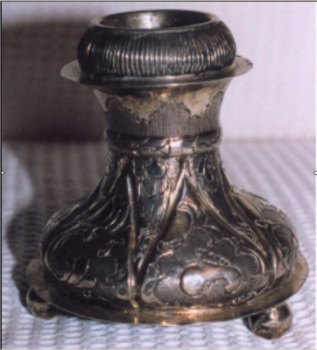 Giorgio Busetto and Giorgio Guida
present 'Two Continental silver salts', a Russian
and a German salt of 18th century.
Giorgio Busetto and Giorgio Guida
present 'Two Continental silver salts', a Russian
and a German salt of 18th century.
This page is available in double version
English
 -
Italiano
-
Italiano
 . .
|
Questions from ASCAS members
Ann Schrad writes:
I have acquired a gravy dish or boat. It is very old and has
some unusual hallmarks on it that no one has been able to
identify. Is anyone up for the challenge? It has stumped the
auction houses of Christies and Skinners here in the USA. I
would love to know the silversmith and the country of origin.
Thanks, Ann
(click on images to enlarge)
Ann's piece is a German 'Hanau silver'. Do any members
recognize the silversmith's mark?
Greg Faia writes:
My wife and I just bought the attached bowl and tray from a
local antique store. We were told that this bowl and tray were
English mid to late 1800s. I have attached the bowl picture and
the hallmark picture to see if anyone may know what it is.
The shields on either side of hallmark are identical. There is a
diagonal cross in the center of each shield and in between the
shields is a fleur de lis. In each quadrant of the shield ( the
north, south, east, and west positions) there is a symbol that
could ba a letter A or a castle, but it is very small. It is
repeated in each quadrant and in both shields (the shields
appear identical). I cannot determine the letters or symbols
althought they appear to be the same in each quadrant on the
shield.
Thanks for your help.
(click on images to enlarge)
does anyone know this maker's mark ?
Michelle Staley writes:
I am a relatively new subscriber and LOVE the newsletter and
website. I have learned so much. Now I have a question. I have
owned this piece for quite some time. I believe that it is
plated but I can't find any information on the mark. It is WTR
with each letter inside of a square, there are also some
numbers. The piece is a very art nouveau basket with a handle
that is 13in tall.
Thank you so much for advancing the knowledge of us all.
Sincerely Michelle Staley
can anyone help Michelle recognizing this mark?
What is this piece ???
Sara j. Schoedinger writes:
I would like to find out what a item is. It's hard to
describe. It says sterling 535 It has makers marks, but I am
uncertain of them as they are worn. It was given to "us" from my
husbands grandmothers estate.
We were told it belonged to her mother (Katherine Schoedinger)
and she cherished it. It's 4 inches long (10 cm.) 2' silver (5
cm.) and then has a wooden stick. Filligree ducks? tulips?
It's a mystery. Markings are on back where the handle enters the
silver has 2 small holes on the sides where the stick
enters.(Stick may not be original)
Looks like a lion or frog with tail ? Very worn and a C ?
sterling 535 is visible has a 1 on the right hand side but not
in the handle insert. Looks like the initial C and under the 535
has a sort of sunburst pattern, but not completly round.
Sara j. Schoedinger
(click on images to enlarge)
Do any members recognize what was the use of this item and
its mark?
Replies to
March Newsletter
Hymie Dinerstein writes:
1. The Teaset is unfortunately a cheaper Brittania Metal
teaset which was the cheaper mass produced copy of the Victorian
Nickel based Electroplated teaset of the Vicyorian sets which
were themselves copies of exactly the identical sets in Sterling
silver. The marks on these sets showing a small rodent points to
it being made by J & J Savory who made good quality sterling
Silver and electroplate of almost equal quality. They also made
Brittania metal, a Lead/Tin cheaper copy but used fictitious
unrecognised marks on this cheaper production so that it could
not identify them as the makers in much the same way as branded
high quality goods are made for big supermarkets todaa without
identifying the actual manufacturer.
2. The Box is Scandinavian and is really a snuff box.
3. This mark 90 used on this piece with these other type of
marks is very misleading and is used on modern silver plated
items made probably in Holland in the last forty years. I would
have it tested before assuming that it is silver. It is usually
on small pieces.
Hymie Dinerstein
Fred Sinfield writes:
....an answer for Gerry Gerhart is the piece is apparently
Dutch and is plated. Have seen similar marks on small
collectables that seem to be of modern manufacture.
...for Gloria Tanner item, this is a spice or vinaigrette holder
that, according to what I have been able to establish, was given
as a sign of a young man's intentions toward the lady of his
choice. These originate from Scandinavia and are known as either
Hovedvansaeg or Luktevannshus and seem to date from the latter
part of the 18th into 19th centuries. The US published magazine
"Silver" has a well illustrated two part article on these in the
Jan-Feb and Mar-Apl 1990 editions.....
Fred Sinfield
Closing our April newsletter I hope you have appreciated its
content.
Your comments, suggestions and advices will be of great help.
My thanks to Giovanni Ciceri, Hymie Dinerstein, Jayne Dye, Greg
Faia, Giorgio Guida, Douglas Hawkes, Ann Schrad, David Shlosberg,
Michelle Staley, Sara Schoedinger and Fred Sinfield, for their
precious contributions.
Giorgio Busetto
Secretary
|
 newsletter # 12 APRIL 2005
newsletter # 12 APRIL 2005




